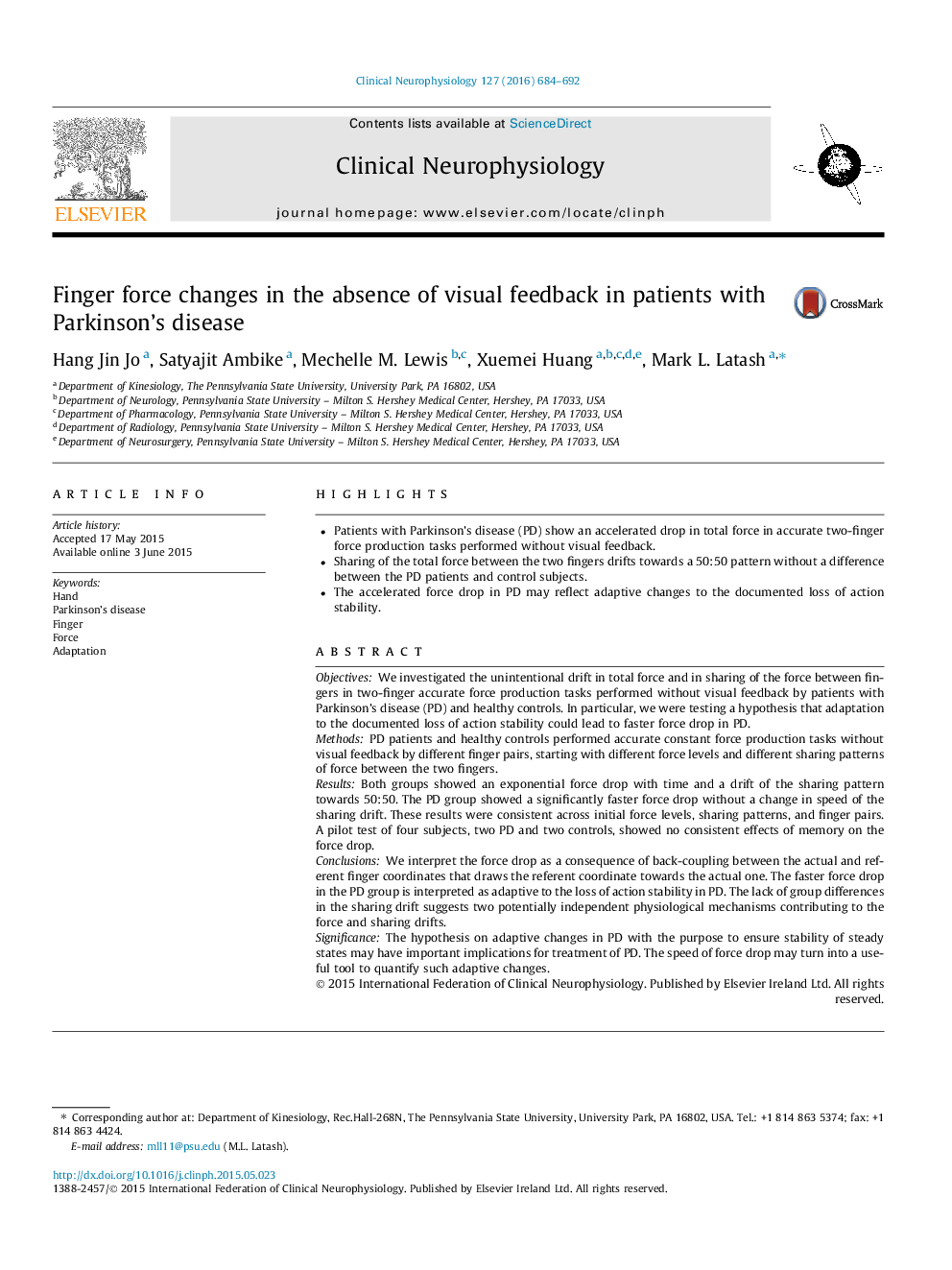| کد مقاله | کد نشریه | سال انتشار | مقاله انگلیسی | نسخه تمام متن |
|---|---|---|---|---|
| 6007964 | 1184960 | 2016 | 9 صفحه PDF | دانلود رایگان |
- Patients with Parkinson's disease (PD) show an accelerated drop in total force in accurate two-finger force production tasks performed without visual feedback.
- Sharing of the total force between the two fingers drifts towards a 50:50 pattern without a difference between the PD patients and control subjects.
- The accelerated force drop in PD may reflect adaptive changes to the documented loss of action stability.
ObjectivesWe investigated the unintentional drift in total force and in sharing of the force between fingers in two-finger accurate force production tasks performed without visual feedback by patients with Parkinson's disease (PD) and healthy controls. In particular, we were testing a hypothesis that adaptation to the documented loss of action stability could lead to faster force drop in PD.MethodsPD patients and healthy controls performed accurate constant force production tasks without visual feedback by different finger pairs, starting with different force levels and different sharing patterns of force between the two fingers.ResultsBoth groups showed an exponential force drop with time and a drift of the sharing pattern towards 50:50. The PD group showed a significantly faster force drop without a change in speed of the sharing drift. These results were consistent across initial force levels, sharing patterns, and finger pairs. A pilot test of four subjects, two PD and two controls, showed no consistent effects of memory on the force drop.ConclusionsWe interpret the force drop as a consequence of back-coupling between the actual and referent finger coordinates that draws the referent coordinate towards the actual one. The faster force drop in the PD group is interpreted as adaptive to the loss of action stability in PD. The lack of group differences in the sharing drift suggests two potentially independent physiological mechanisms contributing to the force and sharing drifts.SignificanceThe hypothesis on adaptive changes in PD with the purpose to ensure stability of steady states may have important implications for treatment of PD. The speed of force drop may turn into a useful tool to quantify such adaptive changes.
Journal: Clinical Neurophysiology - Volume 127, Issue 1, January 2016, Pages 684-692
